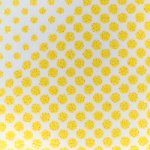Stephen Marsh
Well-known member
Stephen: I have attached more samples to show multi-colour screens / rosette patterns. I hesitated to show the screen comparisons because they are not from the same file and same 1 bit tiff and I didn’t want to mislead anyone.
Understood, thank you Angus.
What would happen if an inkjet company developed a device that could print at 1200 or even 2000 dpi quickly? That is not beyond the scope of my imagination. Would that be a game changer? How would you feel if you purchased a system that costs a quarter of a million and you realized that an inkjet costing $5,000 combined with a RIP for $10,000 could do the same or better.
I doubt that anybody would buy a Kodak Approval system for that sort of money these days. They are no longer new, the only options are refurbished/reconditioned by Kodak or second hand from a previous user. There are still spare parts and technicians and consumables continue to be manufactured and there has not been any announcement that consumables will be discontinued.
I also doubt that a fast high resolution inkjet technology printer suitable for proofing would be placed at that price!
Let’s talk about the market for dot proofing. It is not 99% of commercial offset printers, they left the party a long time ago. It is only really packaging that still has a need to see dots. Due to the use of special colours and process colours and the cost of a failed print run, the stakes are much higher for proofing packaging.
Let’s talk at the current inkjet systems currently on offer for attempting to “compete” with the Kodak Approval in the packaging space (rather than some hypothetical vapourware system). This is generally for mockups and or proofing. Probably using a Roland print/cut unit, either UV or Eco-solvent. For printing on “any” substrate, there is the UV models (gamut is limited, hitting brand colours and certain Pantone’s my not be possible). Then there is the Eco-solvent printers, again gamut is limited, which is why CGS created their XG inks with orange and green and reformulated CMYK to expand the gamut, with the additional Roland white and silver inks. These units are not cheap, one is looking at around AUD $60-70,000 for the UV models and AUD $16,000-$24,000 for the Eco-Solvent models. One has to have Eco-solvent coated media for these latter units, the media has to be suitable for proofing/mockups that rival the Kodak Approval’s flexibility and versatility to be laminated to the final production stock (not just paper - board, vinyl, poly, foil, shrink etc). These machines are not what one would call “fast”. Then there is the RIP time for handling plate resolution files.
In the AU market, established players in the packaging proofing market that still have Approvals continue to use them and rely on them. Despite the age of the Kodak Approval system and the cost of consumables, this old dinosaur is still in use - just not to the extent that it once was. Interim proofs are run on inkjet, nobody is throwing around Approval proofs for every revision in the product development cycle. However when it comes down to the final proof that brands are signing off on - many packaging prepress providers, converters and multinational brands still do wish to have the reassurance of the Approval proof as the final proof before press.
We all remember a time when inkjet proofs first came out. I certainly do. The traditionalists said they were crap. I can't see a dot. I don't trust them. But today they are accepted. I think the same will be the case with inkjet dot proofs and we are going through the same transition. The Tipping Point as Malcolm Gladwell calls it is coming. I'm putting my money on this not so dead horse. ;-)
In commercial offset proofing, for the overwhelming majority, it all became about price and speed, which won over being able to see the dots. For some who may print clothing catalogues or other items that may exhibit moiré, having an accurate dot proof may still be important.
Some of our commercial proofing customers don’t even wish to run their 9900’s at 14x7 resolution as it is too slow compared to running at 7x7 resolution. These shops have no inclination to run dot proofs at 14x14 or even at 14x7 or 7x7 as it takes too long compared to proofing a PDF that has not been separated/screened by a CTP system.
Stephen Marsh
Last edited:















